Today, around the world, there are a wide range of cuisines that are readily available. There are so many types of food to choose from. Every dish offers a unique flavour to be enjoyed. Every cuisine is prepared, marinated and cooked uniquely, originating its own identity. And because of this organic creation of methodologies that a new cuisine may be produced for us to savour the expression of a culture's love & passion.
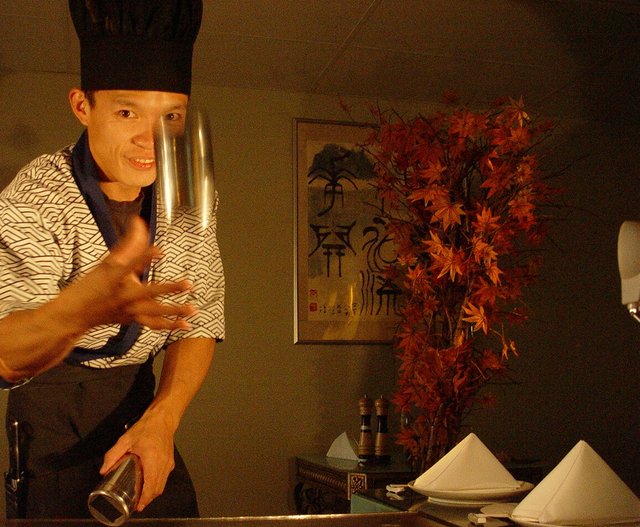
The simplest dishes are often the best because they are easy to make. How we experience what we eat can turn a good meal into a memorable one. Often people would ask us what we cook, as soon as we say teppanyaki another question quickly pops up in their mind, “What is Teppanyaki”? For those who have never experienced this style of cooking the nearest description would be that it is a stylized way of barbecue cooking where the chef stands in front of people cooking up fresh vegetables, juicy seafood and tender steak. And for those who have experienced it might be daunted by the way it is done. Well don’t, because the concept of teppanyaki is not far from that of a home barbecue.
Just like a barbecue, the two basic things you need are a hotplate and a juicy piece of meat. If you’ve thrown a prawn on the barby at a Sunday party, then you’re half way there.
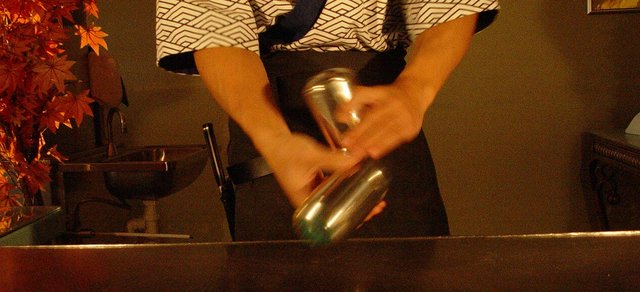
The teppanyaki style is of Japanese origin, meaning “Iron plate cooking”. Numerous restaurants claim that this art of cooking goes back more than one hundred years. It has been said that teppanyaki originated in the home by families cooking on small grills eventually developing into an expressive art performed by chefs.
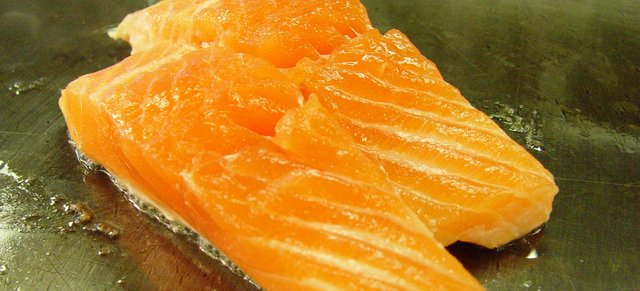
Today we see chefs from around the world practicing the art in elaborate ways of slicing, dicing, chopping of the eggs, the flambe’ and all the action teppanyaki cooking can offer that no other fare can. For some the entertainment is what they come for, but this is not only the reason why they keep coming back. To put it simply the food is cooked fresh in front of your eyes.
About the stainless steel:
The teppanyaki table is the basis of Japanese style barbecue. It is around the teppanyaki that people get to enjoy great food, fantastic wine and a night of entertainment among friends. For people who take importance of the simple pleasures of a great night inn with the people you value the most, a teppanyaki barbecue offers more than just a good meal for your friends but a chance to make an impression. I have cooked for many guests who would love to have a teppanyaki grill in their home but have been under the impression that to be able to cook teppanyaki takes years of training and discipline – not necessarily. The first thing you have to learn in any method of cooking is to learn how to control the heat where you are cooking on. If you have cooked on a barbecue before then you’re ready to cook teppanyaki.
This book familiarises you about the flat surface barbecue and will show you new techniques to use when cooking on the table.
Firstly you have to know how your teppan table works. As you are aware there are two kinds of power source that can be used, electric and gas. Both power source function differently.
Gas:
Most chefs use gas tables because they can distribute a stronger heat at a minimum amount of time. Gas tables will have pilot lights; it functions as a starter light in providing heat for the gas rims and for the rest of the table. Once the heat has been applied you have to be aware how fast your grill heats up. Most gas tables supply an extraordinary amount of heat. While there are no temperature controls on gas, getting to know how gas heats up can be more beneficial, it allows you to control the heat at your own pace. As a result it allows you to cook your dish with better control.
Electric:
Electric tables are simpler to use. It has a temperature knob which can be set at your desired cooking leisure. All you have to do is turn the table and the coil underneath heats up the table. Electric tables however will take a bit longer to heat up than gas. While electric tables distributes a steady heat for cooking it will take some patience in changing the temperature of your teppan.
Utensils that you may need:
There are some essential equipments that you will need to be able to cook the following recipes on the table. These utensils will make the dishes you have chosen faster and easier to cook.
Once you have had a good look at the photos in the following pages you will find that some of these utensils might be new to you. The Okonomiyaki Spatula for example is traditionally a Japanese utensil. This pair of spatula is used for making Okonomiyaki, also known as Japanese pizza. More importantly this is a standard tool among teppanyaki chefs because of its manoeuvrability in scraping and scooping on flat surfaces. If this is not available in your area, don’t worry, you can always improvise with other equipments.
Although it might be ideal to use a pair of okonomiyaki spatula and get that oriental feel on your barbecue, a turner spatula accompanied by a fork will work just as well. It is widely used in teppanyaki establishments in the west. The fork and the turner spatula works very well in cooking fried rice. It allows you to flatten the clumps of the rice with the spatula and break the smaller clumps with a fork. It is also common for teppanyaki chefs to use both the turner spatula and okonomiyaki spatula at the same time. In addition, instead of a holster to hang on to your belt while you’re cooking, a knife pouch is just as good.
Cutting meat on the hot plate can blunt the edge of the knife very quickly. I have found that using a less valuable knife is just as good and easier to sharpen than a stronger, more expensive knife. The soft steel of the less expensive knife might blunt them quickly but they do sharpen just as fast using a stone or steel. It might be more useful leaving your prized knives on the chopping board and just settling for a more economical one. They work just as well if sharpen regularly.
The salt and pepper shakers and dredges are the teppanyaki chef’s most used piece of equipment when it comes to tricks. There is a wide selection of shakers that are used by teppan chefs to play with, ranging from small dredges to tall wooden shakers. When it comes to cooking however, both types are used differently. The salt and pepper dredges are commonly used when there are a large number of guests because of the large amount of salt or pepper that can be sprinkled out. The wooden shakers are commonly used for a smaller number of guests.
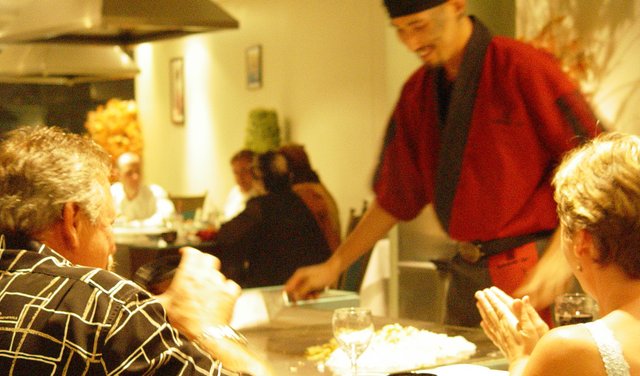
Meeting a Teppanyaki Chef:
One of the most gratifying experience that I get from cooking teppanyaki is to see the satisfaction on my customers’ faces. Unlike other working chefs and cooks of different culinary background, we get to meet our customers upfront and are able to interact with them. Teppanyaki chefs get to see first hand how their work is received. I enjoy the simple plessure of seeing that my work and the food I produce is enjoyed by my guests.
Standing infront of a number of people can be a nerve racking experience for anyone, especially for those who are just starting out. The feeling can be compared to a person making a public speech, except the normal expectation from us is to cook good quality food while entertaining customers. This can be a lot of effort for some chefs without any encouragement from their guests, especially when they have to cook infront of a very hot barbecue table. So remember to cheer on the chef cooking for you. All chefs have different personalities with different cultural background. It is a good idea to know your local teppanyaki chefs when entering a restaurant so you find out which chef is suitable for you.
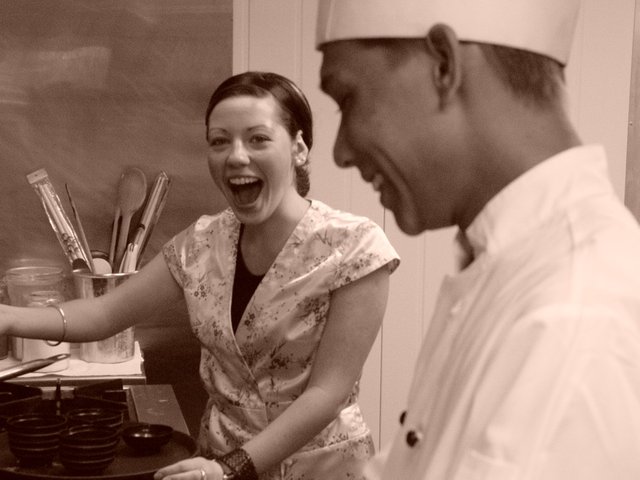
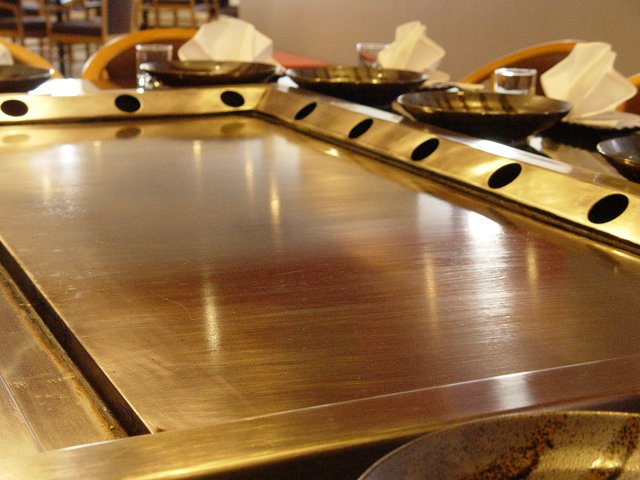
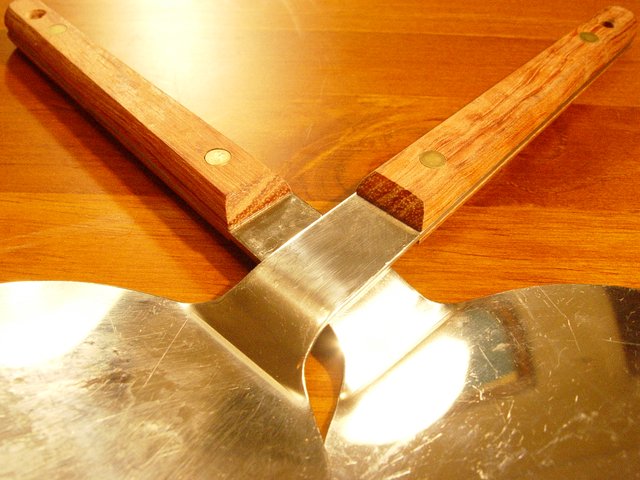
Greetings @jinjin16!
I invite you to make the first achievement in order to be verified in the community and participate in our different dynamics.
Blessings.
We invite you to follow the social networks to Steem y Steemit:
@steemesp |@steemeng|@steem.ind
Downvoting a post can decrease pending rewards and make it less visible. Common reasons:
Submit